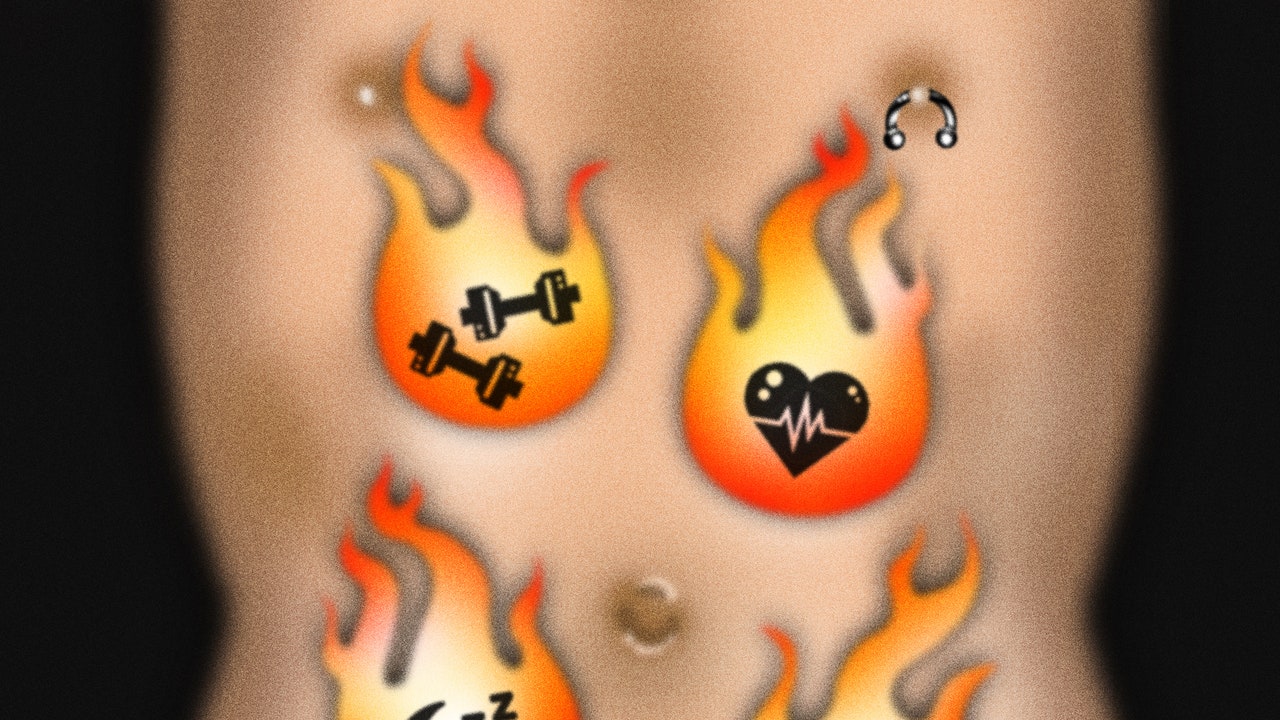Of all the baseless fitness myths to have been peddled through ages of infomercials and influencers alike, the notion that you can âblast belly fatâ is among the most audacious. Targeted fat loss, or spot reduction, is simply not a thing that our bodies are equipped to do.
âYou can’t spot reduce, no matter how promising the marketing and ads that tell you that’s the case,â says Chris Mohr, PhD, RD, cofounder of Mohr Results. âWhile it would be nice if you could lose fat from wherever youâd like, your body handles fat as it wants.â
However, while you may not be able to bump belly fat to the front of your fat-loss queue, thatâs not to say you canât shed it. You absolutely can. Unlike the other 90% or so of fat that we carry on our bodies, belly fatâor visceral fat, to use its government nameâis a particularly dangerous brand of baggage that has been shown to significantly raise your risk of a long list of serious health conditions. And the longer you ignore it, the harder it is to shake.
Here, weâll explain why belly fat is worth your attention. Better yet, with the help of medical and fitness experts, weâll tell you how to lose itâand wonât even try to sell you a DVD.
Why is belly fat more dangerous than âregularâ fat?
Generally speaking, when we talk about fat, weâre talking about subcutaneous fatâthe fat that resides just below the skin. It can show up pretty much anywhere on your body, including your arms, legs, butt, back, and stomach. While we may not always welcome its presence, itâs not necessarily unhealthy.
Visceral fat, on the other hand, resides much deeper inside our bodies. Hidden behind the abdominal wall, it nestles up against vital organs like the heart and liverâoutside the reach of cosmetic procedures like liposuction and cool sculpting. Unlike subcutaneous fat, which you can pinch between your fingers, visceral fat is visible to the naked eye only by way of its contributions to the circumference of your waistline.
âThe reason visceral fat matters is it is highly inflammatory,â says Rekha Kumar, MD, MS, chief medical officer at Found and associate professor of clinical medicine at Weill Cornell Medical College. Among the more common risks associated with elevated visceral fat are cardiovascular and liver disease, although the list is much longer. One study even found that men with high levels of visceral fat were more than three times as likely to develop dementia, while other research has uncovered links to asthma, different types of cancer, and more. âIt puts people at a higher risk for those specific diseases, and probably more that we don’t even know about yet,â says Dr. Mohr.
How to tell if youâre carrying around excess belly fat
The most accurate way to measure your visceral fat would be with a CT or DEXA scan, although those arenât necessarily practical or cost-effective for most people. Fortunately, in this case, a simple waist-to-hip ratio is more useful than specific numbers, so a regular old tape measure will do the trick.

